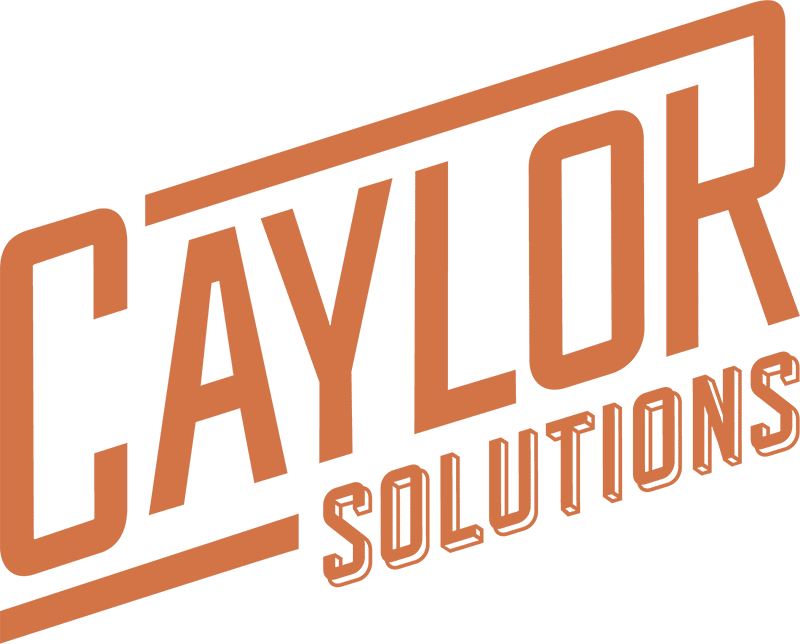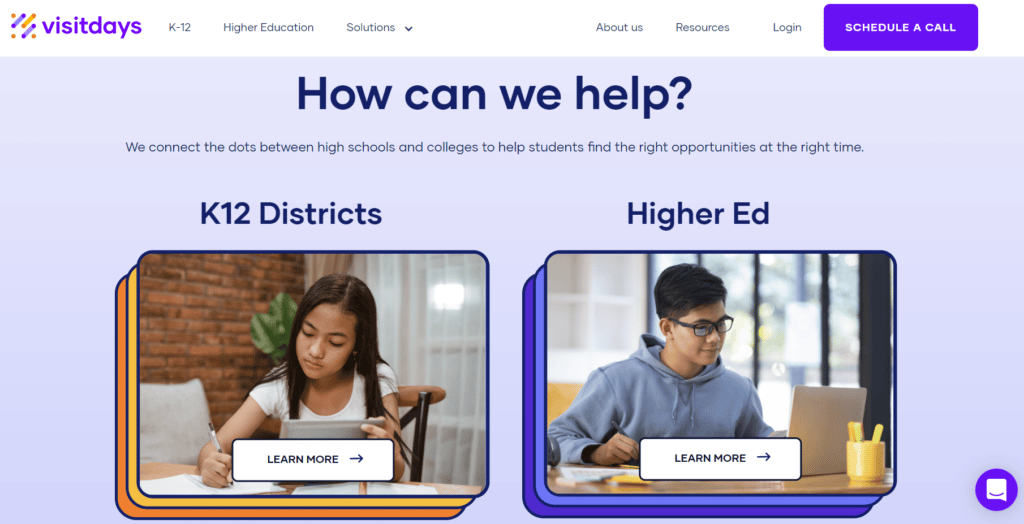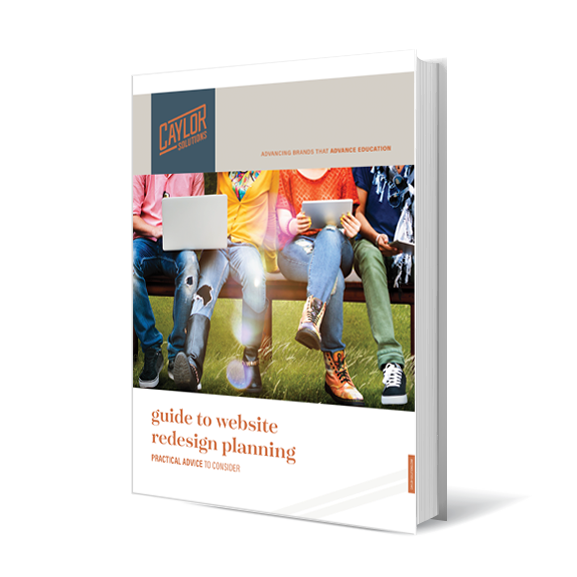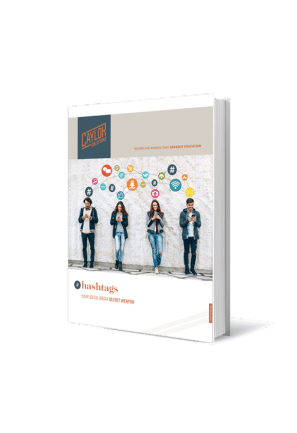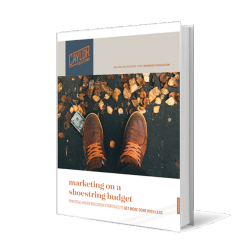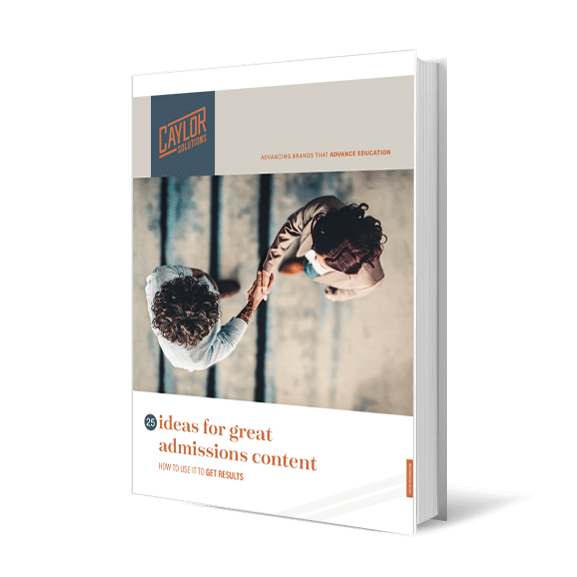College access is an issue in this country. Many potential students simply don’t believe higher education is within reach.
This inaccessibility and the lack of awareness of educational opportunities is one of the leading causes of the declining perception of the value of higher ed.
This is such an important topic in higher education (much like the conversation on student success we had with Nate Simpson from the Gates Foundation).
Sometimes as marketers we get so focused on the tyranny of the urgent to get our messaging out that we forget to ask ourselves the big question.
Are we really making higher education accessible to the vast majority of students in the United States?
Especially to those who could best benefit from it?
Sujoy Roy, CEO of VisitDays, is aiming to change the game when it comes to college access.
In our conversation with him on The Higher Ed Marketer, he discusses how his platform strives to bridge the divide between higher education and high schools in more disadvantaged areas of the country.
Asking the Big Question Behind College Access
I really liked this conversation because Sujoy leads us through the idea of talking about college access in disadvantaged areas.
If we hope to see any kind of improvement, we’ve got to first begin asking the hard questions.
The way we approach it is we think about “Who has a lot of access to higher education?”
When you look at those who are going to elite private schools, or well-funded districts in public school education, you’ll notice that most of the administrators in the high schools have direct lines of communication with college administrators at the top [higher ed institutions].
That is what I define as college access.
This means that if you’re [a high school student], can your counselor quickly make a phone call to some of the best universities and have them in their high school within minutes or within days?
If the answer to that question is either “I don’t know” or “No,” you’re most likely not getting the type of access other students have. I would say that if your high school counselor can make that happen for you, you have an incredible amount of access.
This is a real issue in the United States.
When you ask yourself the big question of college access, it becomes clear that there is a gap between those who have a privileged connection or inroad to prestigious higher ed institutions and those who do not.
Fortunately, Sujoy saw this as an opportunity rather than a problem, and he created VisitDays.
Factors that Affect College Access
I hate to use the word elitism, but there’s a reality to the idea that if you’re in the right school at the right time, you have a few more opportunities open to you than someone else.
VisitDays provides a bit of an equalizer, something to make it a little bit more accessible for everybody.
But what are the things we should be looking out for that block or limit college access for prospective students?
There are probably two to three major themes we should all take a look at in higher ed. [First,] we’re noticing that fewer and fewer students are going to college. That was a big part of the news cycle going into 2022.
Secondarily, we’re noticing that with “test optional,” there’s a lot of discussion on how students are going to become seen by most of the colleges in the country – because most colleges depend on the SAT’s and the College Board to purchase names so they can market to most of the students in the country. So those are the two major shifts that are happening [that help explain] why there’s a decline in interest in going to college.
There’s got to be a new way to find and meet students across the country.
Thirdly, the decline is disproportionately happening towards males in the US. That’s a big area of concern from just a socio-economic level. Five to ten years down the line [it’s very possible that we’ll see] many men just choosing not to pursue higher education.
I think those are the three themes that we need to take a look at.
By and large, [the areas with the greatest decline in interest in higher ed are] in the worst [economic] districts in the country – in the areas that probably need it the most. [They need] to use education to pull out of poverty and increase their overall socio-economic standards.
One of the root causes of the decline in interest in going into higher education is the feeling that it’s out of reach.
If you’re living in a great neighborhood or you have a great high school, going to the most elite schools in the country doesn’t seem out of reach. But for most people, and most children in America, it’s just not even something that they’re aware of. To have a meeting with the counselor at Harvard or at Princeton just doesn’t appear as a possibility.
I agree with Sujoy that all of us in higher education should take a look at these issues of college access.
Overall, there is a decline in interest in higher education, but we can see in the demographics that there are certain populations that are giving up on the idea of a college education.
Listening to Sujoy, it seems that people living in disadvantaged socio-economic areas as well as male students in general believe that a college education is simply not possible for them.
Many of them aren’t even aware of the possibility of getting into a good institution, let alone finishing their educational dream.
In my opinion, we need more tools and companies like VisitDays to help us as enrollment marketers to expand college access to more people in disadvantaged areas.
What we’re hoping for with VisitDays is to bring that type of access directly to the decision makers at these institutions – to everybody really.
We think that if you can do that – and if you can make admissions less about the rejection rate per college and more about the access and the opportunities that one can pursue – I think it will inspire more and more students to see [higher education] as a real option.
On the college side, we want to give universities a way to meet students outside of just purchasing names or doing the other types of marketing activities.
We want them to have authentic meetings, authentic ability to get in front of groups of students that they may not have even considered.
To hear how Visitdays helps to solve these inequality issues, please listen to the rest of our conversation on The Higher Ed Marketer podcast.
Discover more when you listen to the podcast!
Like all of our blog post reviews of The Higher Ed Marketer podcasts, there’s so much more to learn in the podcasts themselves.
Later in our interview, Sujoy explains more about how they use social media tools to create community among students at the top of the funnel.
Listen to our interview with Sujoy Roy to get even more insights into:
- The problem of limited access to higher ed for lower socioeconomic populations
- What the team at VisitDays is doing to help overcome the problem
- The benefits of the platform for colleges and universities
- Where the future of higher ed is going
Want to Improve Your Digital Marketing Results?
Then you’ve got to know how to write for the web. That’s why we want to send you our popular ebook: Writing for the Web: 7 Secrets to Content Marketing Success for Education Marketers!
With this helpful resource, you’ll learn how to: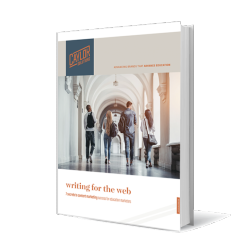
- Grab your reader’s attention immediately
- Pull your reader’s attention deeper into your content
- Write so that Google (and other search engines) find you easily
- Increase your website’s conversion rates
In short, you’ll be able to write the copy that makes your digital marketing strategy work for you. Download your copy today!
Featured image via visitdays.com
